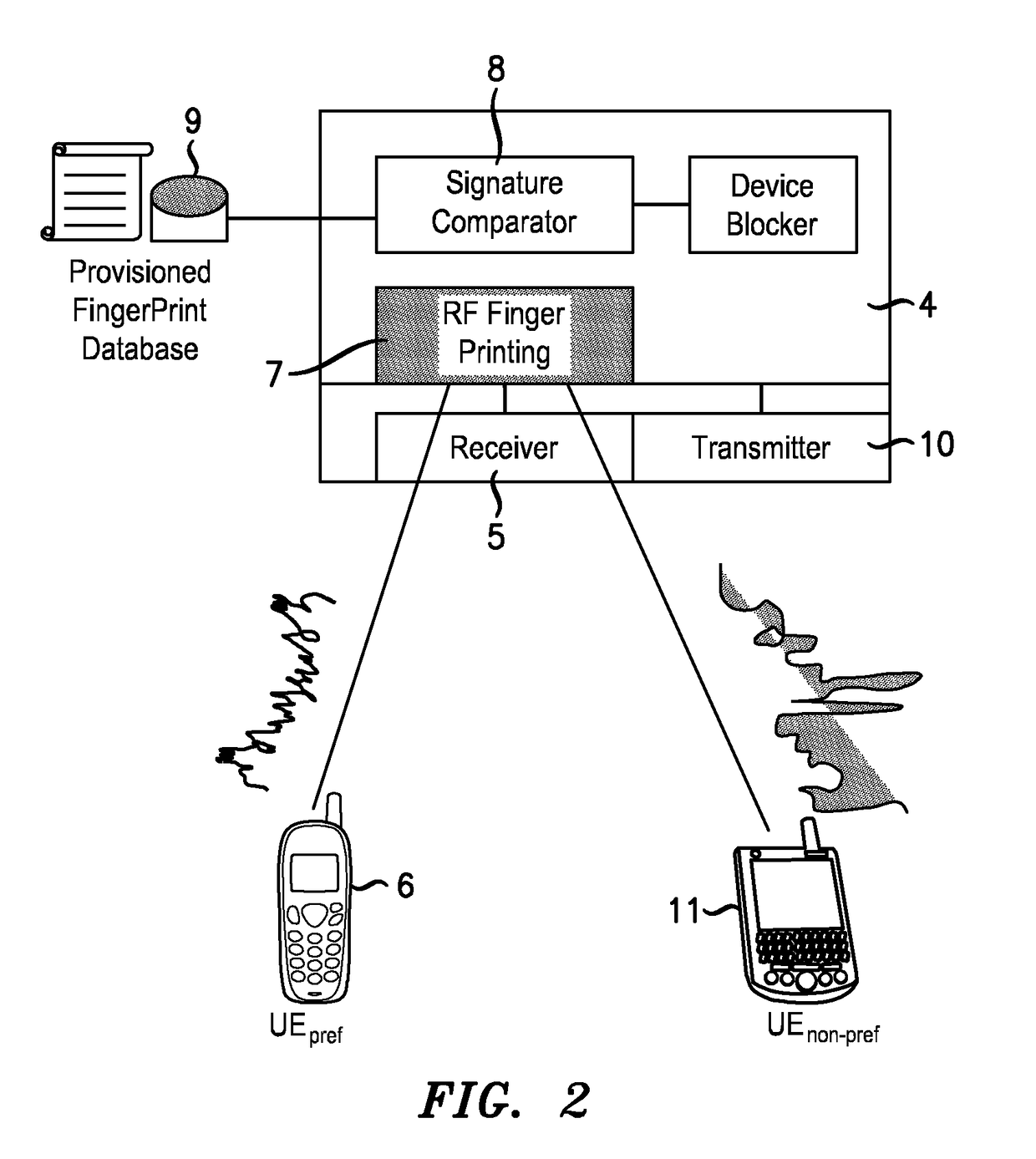Femto cell devices
a cell device and femto technology, applied in the field of femto cell devices, can solve the problems of inability or not advisable to reserve a 5 mhz carrier for femtos, small available 3g spectrum in which umts technologies are currently deployed, and inability to carry out a backhaul, etc., to achieve the effect of reducing the number of false handover events, reducing the impact on the backhaul requirements of femto
- Summary
- Abstract
- Description
- Claims
- Application Information
AI Technical Summary
Benefits of technology
Problems solved by technology
Method used
Image
Examples
Embodiment Construction
[0027]With reference to FIG. 2, a femto base station 4, also referred to as a femto cell, includes a receiver 5 that detects the transmission of a nearby user terminal (UE) 6 while the UE 6 is in an active call with a macro cellular base station (not shown). An analyzer 7 determines the RF signature imposed on the received UE 6 transmissions. The determined UE RF signature is communicated to an authorizer 8 which includes a comparator for comparing the received RF signature with RF signature data for user terminals held in a store 9. The stored RF signature data is associated with user terminals that are permitted to use the femto cell 4. If the comparator determines that there is a close enough match between the determined RF signature for the UE 6 and a stored signature, the UE is identified as being authorized to use the femto base station 4. The femto base station 4 sends a message via a transmitter 10 to the macro cell base station to inform it that it is a possible handover ca...
PUM
 Login to View More
Login to View More Abstract
Description
Claims
Application Information
 Login to View More
Login to View More - R&D
- Intellectual Property
- Life Sciences
- Materials
- Tech Scout
- Unparalleled Data Quality
- Higher Quality Content
- 60% Fewer Hallucinations
Browse by: Latest US Patents, China's latest patents, Technical Efficacy Thesaurus, Application Domain, Technology Topic, Popular Technical Reports.
© 2025 PatSnap. All rights reserved.Legal|Privacy policy|Modern Slavery Act Transparency Statement|Sitemap|About US| Contact US: help@patsnap.com



